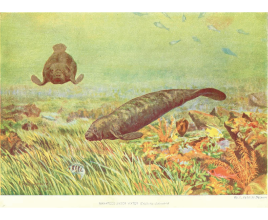N. & S. America exploration
- ... after his five-year expedition, Allesandro Malaspina was accused of conspiring against the king and imprisoned?
- ... only by the intervention of Napoleon in 1803 was Malaspina freed from Spanish prison and returned to Italy?
- ... the results of this five-year journey were impressive, but the political situation of the day prevented their being published and they disappeared behind the walls of the royal archive?
- ... the findings of the expedition were uncovered and assessed by the German scientist and explorer Alexander Humboldt, but by then Malaspina was dead?
- ... Malaspina and his expedition are today commemorated by a glacier in Alaska and a strait near the southwest shore of Canada?
- ... the results of this expedition, which amassed extensive and valuable new geographic information about South America, Oceania and the Philippines is comparable to the researches of such giants as Bougainville, Cook and Vancouver?
- The expedition sailed from Cadiz on April 8th, 1789 and returned to Spain September 21st, 1794.
- They use two sailing ship, the Descubieta and the Atrevida.
- The ships displaced 306 tons, were 36 meters long and 4.2 meters wide.
- At the beginning of the expedition, Malaspina was 30 years old.
In 1789, with the blessing of the Spanish King Carlos IV, Malaspina set out as the leader of an expedition to South America and the Pacific Ocean. The sailing ships Descubieta and Atrevida sailed from Cadiz. In Valparaiso, the twenty-seven year old Czech botanist Thaddeus Haenke joined the expedition. He was recommended by the renowned Dutch botanist Jacquin to accompany Malaspina. He travelled to Spain, but Malaspina had already sailed. Haenke boarded another ship and sailed after him. However, on November 23rd, near Rio de la Plata, his ship ran onto a reef and foundered. He once again missed Malaspina's expedition. Haenke set out in pursuit again, via an unknown path across the continent. He finally caught up with Malaspina in Valparaiso and joined the expedition there. Together they travelled north. After investigating the Galapagos Islands, they sailed along the coast of the entire north American continent, all the way to Alaska. They looked for a passage to the Atlantic and mapped glaciers on Mt. Elias and Yakutat Bay. At the end of 1791, the expedition sailed from Mexico across the Pacific Ocean to the Marianas and the Philippines, where they mapped all the main islands. Haenke also wrote detailed descriptions of flowers. In 1792 the expedition continued from Manila across the New Hebrides to New Zealand. The trip was crowned by a visit to Australia, mapping of Tonga and a return to Peru, where Haenke remained. Malaspina returned to Spain without Haenke in 1794.


